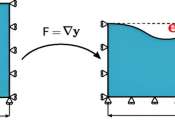Lessons from Ridgecrest earthquake sequence
The largest earthquake sequence in Southern California in two decades has taught scientists that large earthquakes can occur in a more complex fashion than commonly assumed. The sequence also loaded up strain on a nearby ...









